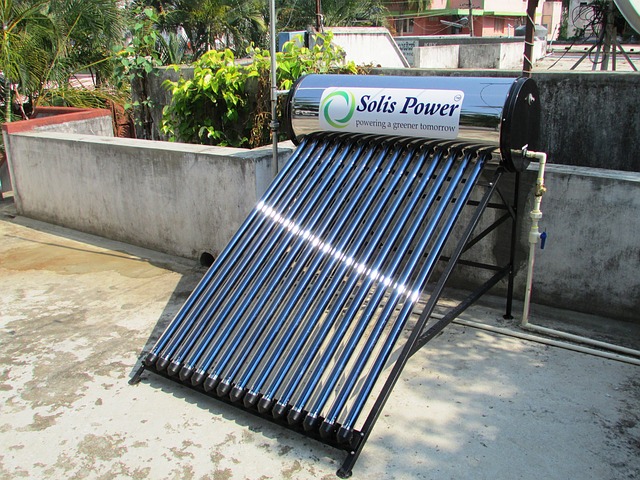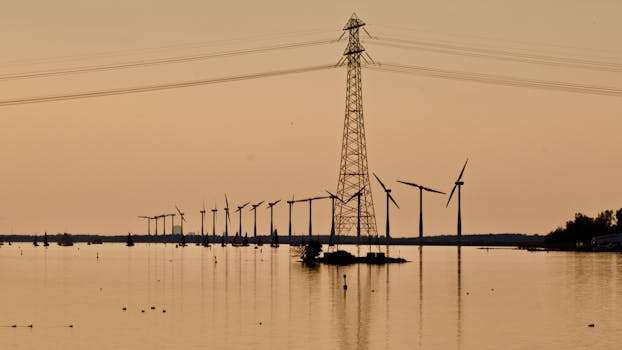“Empower Your Home: Master the Art of Wiring a Solar-Powered Water Heater!”
Wiring a solar-powered water heater involves connecting the system’s components to ensure efficient energy transfer and operation. This process typically includes installing solar panels, connecting them to a charge controller, and wiring the system to the water heater itself. Proper wiring is crucial for maximizing energy efficiency and ensuring safety. This guide will outline the essential steps and considerations for wiring a solar-powered water heater, including necessary tools, safety precautions, and best practices for installation.
Tools Needed for Wiring a Solar-Powered Water Heater
Wiring a solar-powered water heater is a task that requires careful planning and the right tools to ensure a safe and efficient installation. To begin with, it is essential to gather the necessary tools before embarking on this project. Having the right equipment on hand not only streamlines the process but also minimizes the risk of errors that could lead to inefficiencies or safety hazards.
First and foremost, a multimeter is an indispensable tool for this task. This device allows you to measure voltage, current, and resistance, which are critical for diagnosing electrical issues and ensuring that the system is functioning correctly. By using a multimeter, you can verify that the solar panels are producing the expected voltage and that all connections are secure, thus ensuring optimal performance of the water heater.
In addition to a multimeter, wire strippers are essential for preparing the electrical wires. These tools allow you to remove the insulation from the ends of the wires without damaging the copper strands inside. Properly stripped wires are crucial for making secure connections, which in turn helps to prevent electrical shorts and ensures that the system operates efficiently. Alongside wire strippers, a pair of pliers will also be useful for bending and twisting wires, making it easier to create tight connections.
Furthermore, a screwdriver set is necessary for securing various components of the solar water heater system. Different screws may be used throughout the installation, so having a variety of screwdrivers on hand—both flathead and Phillips—will facilitate the assembly process. Additionally, a drill may be required for creating holes in mounting brackets or securing the solar panels to the roof, ensuring that everything is firmly in place.
As you prepare to wire the solar-powered water heater, it is also important to have electrical tape and heat shrink tubing available. Electrical tape is used to insulate and protect wire connections, preventing moisture and debris from causing corrosion or shorts. Heat shrink tubing serves a similar purpose, providing a more durable and weather-resistant seal around connections. Both of these materials are vital for ensuring the longevity and reliability of the electrical system.
Moreover, a conduit bender can be beneficial if you are using conduit to protect the wiring. This tool allows you to create smooth bends in the conduit, ensuring that the wires are safely housed and protected from environmental factors. Properly installed conduit not only enhances safety but also contributes to a neater appearance.
Lastly, safety gear should not be overlooked. Wearing gloves and safety goggles is essential when working with electrical components, as they protect against potential injuries. Additionally, having a first aid kit nearby is a prudent measure in case of any accidents.
In conclusion, wiring a solar-powered water heater requires a specific set of tools to ensure a successful installation. By gathering a multimeter, wire strippers, pliers, screwdrivers, a drill, electrical tape, heat shrink tubing, a conduit bender, and safety gear, you will be well-equipped to tackle the project. Each tool plays a vital role in the process, contributing to the overall safety and efficiency of the solar water heating system. With the right tools at your disposal, you can confidently proceed with the wiring, paving the way for a sustainable and cost-effective solution for your hot water needs.
Step-by-Step Guide to Wiring Your Solar Water Heater

Wiring a solar-powered water heater is a crucial step in harnessing the sun’s energy to provide hot water for your home. This process, while technical, can be accomplished with careful planning and attention to detail. To begin, it is essential to gather all necessary materials and tools, including a solar water heater unit, wiring, connectors, a multimeter, and safety gear such as gloves and goggles. Before starting the installation, ensure that you have a clear understanding of the system’s components and how they interact with one another.
First, it is important to familiarize yourself with the solar water heater’s wiring diagram, which typically comes with the unit. This diagram will provide a visual representation of how the various components are connected, including the solar panels, the storage tank, and the control system. Understanding this layout will help you avoid mistakes during the wiring process. Once you have reviewed the diagram, you can begin by positioning the solar panels on your roof or another suitable location that receives ample sunlight throughout the day. Ensure that the panels are securely mounted and angled correctly to maximize solar exposure.
Next, you will need to run the wiring from the solar panels to the water heater unit. It is advisable to use UV-resistant wiring to withstand outdoor conditions. As you lay the wiring, be mindful of any potential hazards, such as sharp edges or areas where water may accumulate. Once the wiring is in place, connect the positive and negative leads from the solar panels to the corresponding terminals on the water heater. This step is critical, as incorrect connections can lead to system failure or even damage to the components.
After connecting the solar panels, the next step involves wiring the storage tank. The tank typically has a thermostat and a heating element that require proper connections to function effectively. Begin by connecting the thermostat to the control unit, ensuring that the wires are securely fastened and insulated to prevent any short circuits. Following this, connect the heating element to the power supply, making sure to adhere to the manufacturer’s specifications regarding voltage and amperage. It is essential to double-check all connections at this stage to ensure that everything is wired correctly.
Once the wiring for both the solar panels and the storage tank is complete, it is time to test the system. Before powering on the unit, use a multimeter to check for continuity in the wiring and to ensure that there are no short circuits. This step is vital for safety and will help prevent any electrical issues once the system is operational. If everything checks out, you can proceed to power on the system and monitor its performance. Observe the temperature readings on the thermostat and ensure that the water is heating as expected.
Finally, it is important to regularly maintain your solar water heater system to ensure its longevity and efficiency. Periodic inspections of the wiring and connections will help identify any wear or damage that may occur over time. Additionally, keeping the solar panels clean and free from debris will maximize their efficiency and ensure that your system continues to provide hot water reliably. By following these steps and maintaining your system, you can enjoy the benefits of a solar-powered water heater, reducing your energy costs while contributing to a more sustainable future.
Common Wiring Mistakes to Avoid in Solar Water Heater Installation
When installing a solar-powered water heater, it is crucial to understand the common wiring mistakes that can lead to inefficiencies or even system failures. One of the most frequent errors is improper connection of the solar panels to the inverter. It is essential to ensure that the positive and negative terminals are correctly aligned. Reversing these connections can not only prevent the system from functioning but may also damage the inverter, leading to costly repairs. Therefore, double-checking the wiring before powering up the system is a fundamental step that should never be overlooked.
Another common mistake involves neglecting to use the appropriate gauge of wire for the installation. Using wires that are too thin can result in overheating and energy loss, while excessively thick wires can be unnecessarily cumbersome and expensive. It is vital to consult the manufacturer’s specifications or a professional electrician to determine the correct wire gauge based on the distance between the solar panels and the water heater. This attention to detail ensures that the system operates efficiently and safely.
Moreover, failing to secure connections properly can lead to intermittent power supply issues. Loose connections can create resistance, which not only reduces the efficiency of the system but can also pose a fire hazard. To avoid this, it is advisable to use high-quality connectors and to ensure that all connections are tightened adequately. Regular maintenance checks can also help identify any loose connections before they become a significant problem.
In addition to these wiring issues, overlooking the importance of grounding can have serious consequences. Grounding is essential for protecting the system from electrical surges and lightning strikes. Many installers either forget to ground the system or do so incorrectly, which can lead to equipment damage and safety risks. It is crucial to follow local electrical codes and guidelines when grounding the solar water heater to ensure both safety and compliance.
Another mistake that often occurs is the improper placement of the wiring. Running wires in areas exposed to extreme temperatures or moisture can lead to insulation breakdown and short circuits. It is advisable to route wires through conduits or protective sheathing to shield them from environmental factors. Additionally, avoiding sharp bends and kinks in the wiring can help maintain the integrity of the electrical connections.
Furthermore, many installers underestimate the importance of labeling wires during installation. Without proper labeling, troubleshooting becomes a daunting task, especially when maintenance is required. Clearly marking each wire according to its function can save time and reduce frustration in the long run. This practice not only aids in future repairs but also enhances the overall safety of the system.
Lastly, it is essential to avoid rushing through the installation process. Taking shortcuts can lead to oversights that compromise the system’s performance and safety. It is advisable to follow a systematic approach, ensuring that each step is completed thoroughly before moving on to the next. Patience and attention to detail are key components of a successful solar water heater installation.
In conclusion, avoiding these common wiring mistakes is crucial for the effective and safe operation of a solar-powered water heater. By ensuring proper connections, using the correct wire gauge, securing connections, grounding the system, protecting wiring from environmental factors, labeling wires, and taking the time to complete the installation correctly, homeowners can enjoy the benefits of solar energy without the headaches of preventable issues.
Safety Precautions When Wiring a Solar-Powered Water Heater
Wiring a solar-powered water heater can be a rewarding project, but it is essential to prioritize safety throughout the process. Before embarking on this endeavor, it is crucial to understand the potential hazards associated with electrical work and the specific requirements of solar energy systems. First and foremost, always ensure that you are wearing appropriate personal protective equipment, such as insulated gloves and safety goggles. These items can significantly reduce the risk of injury from electrical shocks or accidental contact with sharp tools.
Moreover, it is vital to familiarize yourself with local electrical codes and regulations. Each region may have specific guidelines regarding the installation of solar-powered systems, and adhering to these codes is not only a legal requirement but also a critical aspect of ensuring safety. Consulting with a licensed electrician or a solar energy professional can provide valuable insights into the necessary permits and inspections required for your project. This step is particularly important if you are not experienced in electrical work, as professional guidance can help prevent costly mistakes and enhance the overall safety of the installation.
In addition to understanding local regulations, it is essential to turn off the power supply before beginning any wiring work. This precaution cannot be overstated; working on live wires poses a significant risk of electric shock. To ensure that the power is completely off, locate the circuit breaker that controls the water heater and switch it off. It is also advisable to use a multimeter to verify that there is no voltage present in the wires you will be working with. This extra step can provide peace of mind and further reduce the risk of accidents.
As you proceed with the wiring, pay close attention to the connections and components involved in the solar-powered water heater system. Use high-quality, weather-resistant materials designed for outdoor use, as these will withstand the elements and reduce the likelihood of corrosion or damage over time. When connecting the solar panels to the water heater, ensure that you are using the correct gauge of wire to handle the expected current. Using wires that are too thin can lead to overheating and potential fire hazards, while wires that are too thick may be unnecessarily cumbersome and difficult to manage.
Furthermore, it is important to properly ground the system to prevent electrical surges and ensure safety. Grounding provides a path for excess electricity to dissipate safely into the earth, reducing the risk of shock or fire. Follow the manufacturer’s instructions for grounding the solar panels and the water heater, and consider consulting an electrician if you are unsure about the proper grounding techniques.
Finally, once the wiring is complete, take the time to double-check all connections and ensure that everything is secure. Loose connections can lead to arcing, which poses a fire risk. After verifying that all components are correctly installed and secured, restore power to the system and monitor its operation closely during the initial use. This careful approach will help you identify any potential issues early on, allowing for prompt resolution.
In conclusion, wiring a solar-powered water heater requires careful attention to safety precautions. By wearing protective gear, understanding local regulations, turning off power, using quality materials, grounding the system, and thoroughly checking connections, you can ensure a safe and successful installation. Taking these steps not only protects you during the installation process but also contributes to the long-term reliability and efficiency of your solar-powered water heater system.
Q&A
1. **Question:** What are the basic components needed to wire a solar-powered water heater?
**Answer:** The basic components include solar panels, a charge controller, a battery (if using a storage system), an inverter (if converting to AC), and the water heater itself.
2. **Question:** How do you connect the solar panels to the charge controller?
**Answer:** Connect the positive terminal of the solar panels to the positive input of the charge controller and the negative terminal to the negative input.
3. **Question:** What is the purpose of the charge controller in a solar-powered water heater system?
**Answer:** The charge controller regulates the voltage and current coming from the solar panels to prevent overcharging the battery and to ensure safe operation.
4. **Question:** How do you connect the water heater to the system?
**Answer:** Connect the output of the charge controller (or inverter, if applicable) to the water heater’s power input, ensuring proper voltage compatibility and following the manufacturer’s wiring instructions.
Conclusion
To wire a solar-powered water heater, first ensure all safety precautions are taken, including turning off power sources. Connect the solar panels to a charge controller, which regulates the voltage and current. Then, wire the charge controller to the battery bank for energy storage. Next, connect the inverter to the battery bank to convert DC to AC power if needed. Finally, wire the water heater to the inverter or directly to the charge controller, depending on the system design. Ensure all connections are secure and insulated to prevent short circuits. Regularly check the system for maintenance and efficiency.




